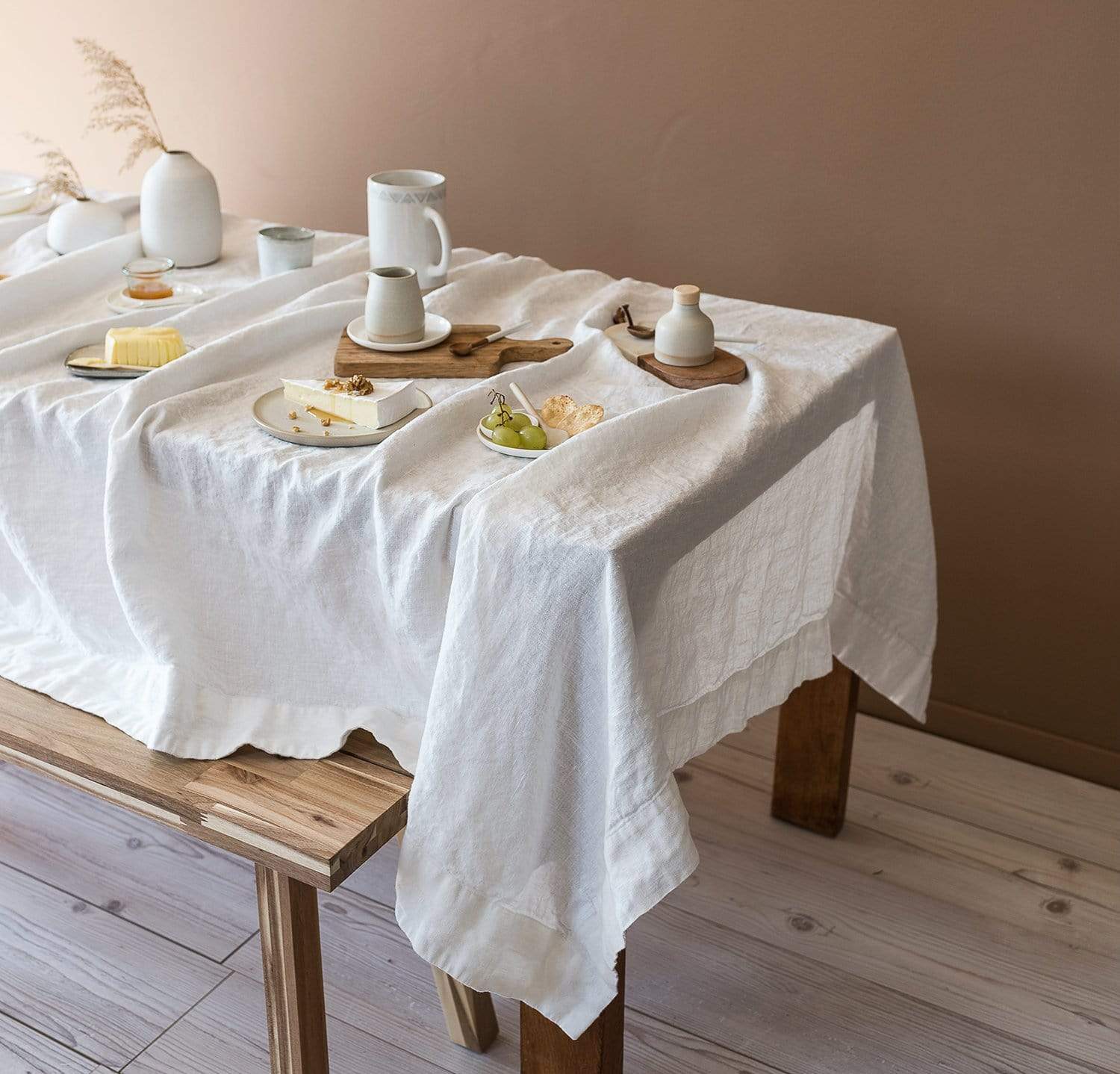Lovely Table Cloths: Boost Your Dining-room Decoration
Wiki Article
Bed Linen Textile Technologies: Exploring Modern Trends and Creative Applications in Style and Fabric Sector
From lasting manufacturing approaches to cutting-edge weaving technologies, the evolution of linen is reshaping the landscape of the textile industry. As we delve right into the worlds of innovative style applications and the introduction of bed linen blends and crossbreed materials, a brand-new phase unfolds in which linen's role in future fabric developments takes facility stage.Sustainable Practices in Linen Production
Lasting methods in linen production have actually come to be progressively essential in the textile industry's initiatives to decrease environmental impact and advertise ethical sourcing approaches. Bed linen, a natural fiber stemmed from the flax plant, provides a variety of benefits such as biodegradability, toughness, and breathability. However, standard methods of bed linen manufacturing can include substantial water consumption, chemical use, and energy-intensive processes.To resolve these difficulties, several textile makers are adopting sustainable techniques throughout the linen manufacturing procedure. This includes sourcing flax from organic ranches that avoid dangerous pesticides and chemicals, carrying out water-efficient retting strategies to extract fibers from the flax stalks, and using environment-friendly dyes and coatings. Additionally, some business are buying renewable energy sources to power their manufacturing centers and reducing waste with recycling and upcycling campaigns.
Technological Improvements in Bed Linen Weaving
With the expanding emphasis on sustainable techniques in bed linen production, the textile sector is currently seeing a rise in technological advancements particularly focused on transforming the art of bed linen weaving. These technologies are improving the way linen materials are created, supplying increased effectiveness, top quality, and creativity in weaving methods.Among the key technological developments in linen weaving is the combination of electronic looms. These sophisticated looms are outfitted with software program that permits intricate and intricate styles to be woven with accuracy. By digitizing the weaving process, makers can accomplish higher consistency and accuracy in their linen textiles.
Additionally, developments in yarn spinning innovation have made it possible for the manufacturing of finer and more resilient linen yarns - table cloths. This leads to softer and smoother linen materials that keep their high quality also after several usages and cleans
In addition, the growth of environmentally friendly dyeing procedures and finishes for bed linen materials is gaining grip. These lasting practices not just reduce the environmental influence yet likewise satisfy the enhancing consumer need for morally created fabrics.
Creative Design Applications for Linen
Ingenious creative approaches are significantly forming the imaginative style applications for linen in the fabric industry. Bed linen's natural aesthetic charm and ability to mix with other textiles make it a preferred choice for producing unique garments and devices that cater to the eco mindful consumer.In addition, designers are explore linen in home decor, using its breathable and durable nature to craft fashionable home furnishings such as drapes, bedding, and upholstery. The structure and drape of bed linen bring a feeling of class and convenience to indoor rooms, including a touch of style to modern-day homes.

Bed Linen Blends and Hybrid Fabrics

Crossbreed textiles, on the other hand, take the principle of blending a step better by integrating additional components such as metallic strings, recycled materials, or conductive fibers. These innovative fabrics not only increase the style possibilities however also present practical facets like conductivity, antimicrobial homes, or enhanced durability. Crossbreed fabrics are significantly being used in numerous industries, consisting of fashion, indoor style, and technological textiles, where the need for multifunctional materials is on the surge.
Linen's Duty in Future Textile Innovations

In the world of future textile developments, bed linen is anticipated to be a key player in the advancement of innovative practical materials. Scientists and designers are exploring methods to improve bed linen's fundamental top qualities via technological developments, such as integrating clever fabrics, nanotechnology, and performance finishes. These developments aim to raise bed linen's efficiency features, making it ideal for a broader variety of applications, from activewear to safety apparel.
Moreover, the combination of bed linen with other natural or synthetic fibers opens up limitless opportunities for producing novel textiles with special residential or commercial properties and functionalities. By leveraging linen's characteristics and checking out ingenious blends, the fabric sector is positioned to introduce interesting developments that deal with developing consumer demands and sustainability needs.
Verdict
To conclude, the expedition of sustainable methods, technological improvements, innovative style applications, linen blends, and its role in future fabric technologies highlight the continual development of linen textile in the modern-day layout and fabric industry. With a concentrate on technology and creative thinking, the convenience and eco-friendly nature of bed linen make it an important material for makers and designers alike, leading the way for additional advancements and advancements in the area of fabrics.As we dig into the realms of creative style applications and the development of bed linen blends have a peek at this website and hybrid fabrics, a brand-new phase unravels in which bed linen's role in future fabric advancements takes facility phase.
Exploring the blend of linen with other textiles has actually led to the appearance of ingenious blends and hybrid textiles in the contemporary fabric market. Bed linen blends supply a distinct combination of the characteristics of linen with those of various other fibers, resulting in materials that possess enhanced residential or commercial properties such as increased durability, enhanced draping, and minimized wrinkling.The advancement of linen blends and crossbreed textiles has actually set the phase for Bed linen to play a pivotal duty in driving future textile advancements.In the world of future textile advancements, bed linen is anticipated to be an right here essential gamer in the growth of innovative functional fabrics.
Report this wiki page